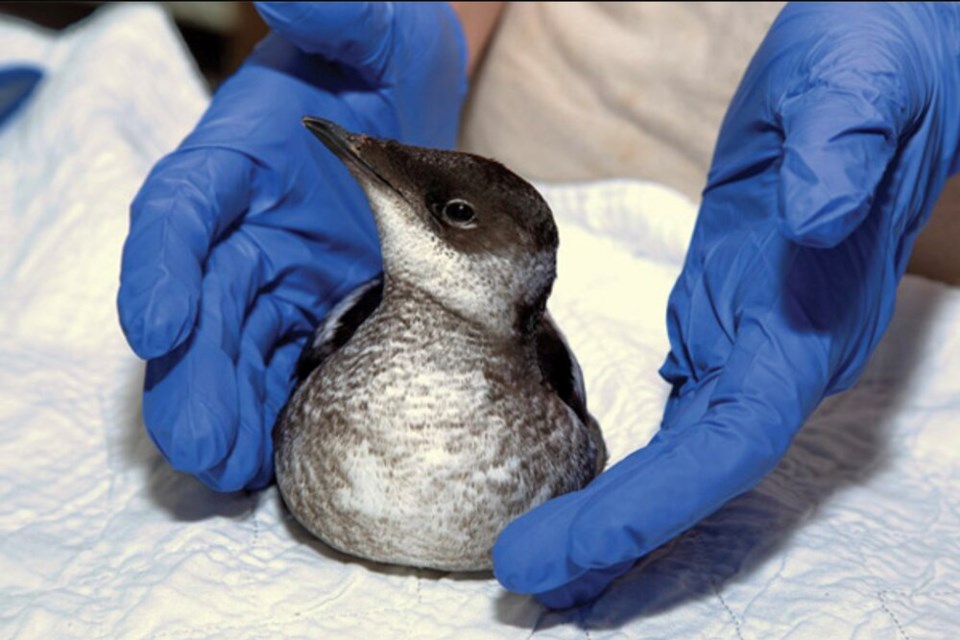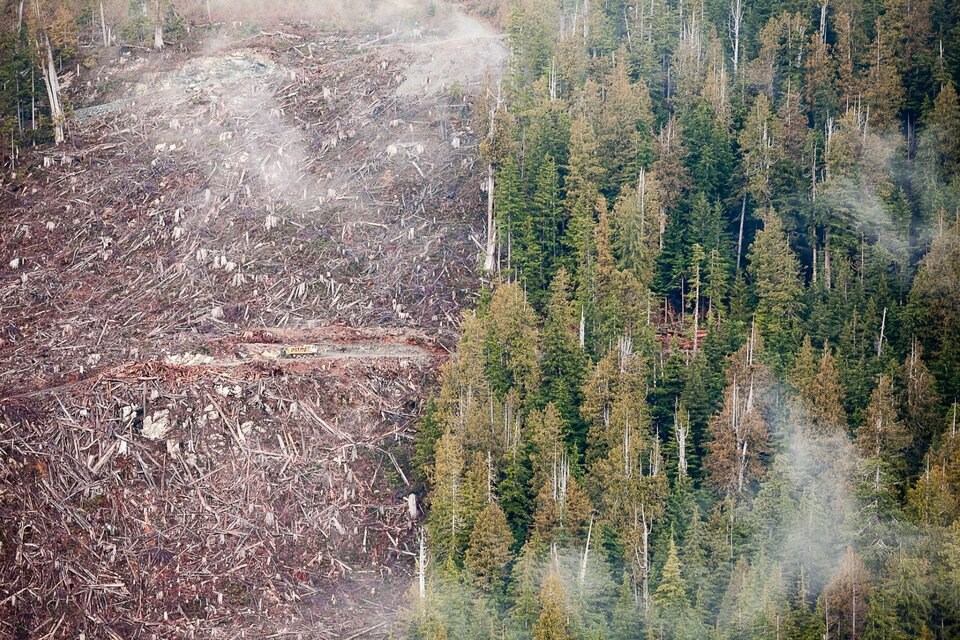The B.C. government has dropped the amount of wood that can be legally cut in a corner of Vancouver Island vital to the recovery of the marbled murrelet — a migratory seabird threatened under the federal Species at Risk Act.
On Monday, the Ministry of Forests said it was ordering a 19 per cent decrease in the annual allowable cut of Tree Farm Licence (TFL) 44, a swath of forest straddling the Alberni Inlet near Barkley Sound. The province said it adjusted the harvest licence as a buffer to help recover the marbled murrelet, a species that nests in coastal old-growth forests.
But Jens Wieting, the senior forest and climate campaigner for Sierra Club BC, said the reality on the ground does not square with a rationale provided by the province.
“There’s no certainty that marbled murrelet habitat will be protected,” said Wieting. “We know there is logging happening in forests where we know the marbled murrelets are flying in and out.
“This is tinkering around the edges.”
'No indication of paradigm shift'
Over the last several years, the forests of western Vancouver Island have acted as a flashpoint for the largest acts of civil disobedience in Canadian history. Since 2021, more than 1,000 people have been arrested after trying to block logging in the area.
That year, the Huu-ay-aht First Nation contested a plan to defer old-growth logging in the province on grounds the provincial government had overestimated the amount of old growth in the area.
At the time, Chief Coun. Robert Dennis Sr. said his nation’s analysis of provincial maps found a third of TFL 44 was old growth, not three per cent estimated by independent researchers from B.C.’s Old Growth Advisory Panel.
The disagreement is part of a bigger problem, said Wieting: many First Nations rely on forestry, and without long-term conservation financing, there's no alternative to stop logging old-growth forests.

At the same time, Wieting said the rationale provided to reduce TFL 44's annual allowable cut to 642,800 cubic metres a year provided “no coherent information” showing how ecological integrity was considered in a systemic way.
“This is the third year since the province said it would implement the recommendations in the Old Growth Strategic Review promising a paradigm shift, to centre ecological biodiversity in forestry,” he said.
“There’s no indication of a paradigm shift in this document.”
Torrance Coste, the Wilderness Committee’s national campaign director, said the 19 per cent reduction in logging was a promising sign, but without knowing where the birds are, it would be hard to know if their habitat was being prioritized.
“It’s a (threatened) bird. Any reduction in logging is good,” Coste said.
“You have to climb their trees to see their nests... If you’re cutting a patch of old growth, it’s really hard to tell if there are birds there.”
Future of marbled murrelet to be litigated in federal lawsuit
Both the Sierra Club BC and the Wilderness Committee sued the federal government in 2022 over claims the minister of environment and climate change failed in his duty to protect the habitat of over two dozen migratory bird species.
The court action represents an escalation of the two groups' efforts to protect critical marbled murrelet habitat — for the past two years, they have been sending petitions and letters calling on the federal and B.C. governments to take action.
As few as 263,000 birds are left, including at least 50,000 in B.C., where the species has lost an estimated 20 per cent of its habitat over the past three generations, according to the Committee on the Status of Endangered Wildlife in Canada (COSEWIC).
The species breeds multiple times throughout its life, and low reproductive rates mean keeping paired birds alive for a long time is key to the health of the species.
The marbled murrelet is threatened by oil contamination, entanglement in gill nets when foraging at sea, and proposed shipping routes through its range. That’s all expected to lead to a more than 30 per cent projected decline in its population over the next three generations.
Habitat loss, however, remains the largest threat, says COSEWIC. Since 2016, nesting habitat for the bird has declined in the eastern reaches of Vancouver Island, “primarily because of industrial logging,” according to court documents.
Over the next five to eight years, Vancouver Island’s remaining 8,500 hectares of nesting habitat are projected to be increasingly at risk due to logging.


